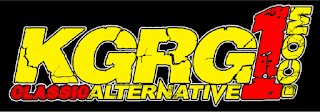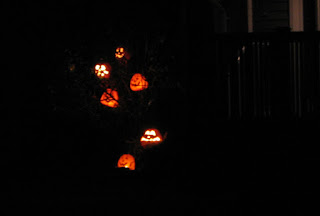JUNE = BLAH
It's already closing in on the end of June, and half way through the year 2018. Who would know it? The weather around here has been ranging from sunny and warm, to sort of a blah weather -- 68 degrees F and cloudy or rain.Which is how the rest of things have been the past couple months, more or less blah.
An attempt to load an MP4 video/sound file of frogs chirping onto Blogger, but it doesn't seem to be working. :-(
EDIT TO ADD: It appears the sound file works after all! Wonders never cease!
FROGS AT NIGHT
The frogs were chirping and croaking a lot at night all during the month of May, which was very cool to hear. I often ride the local bike trail at night, and it passes two very large frog ponds, so during frog season it can get kind of loud. It always brings a smile to my face because here in Western Washington we don't have many night noises like you have in the Eastern part of the US -- no fields full of crickets, forests full of insect noises, and the like.Here if you hear a sound in the woods or fields it's either a rare danger (like a coyote or a cougar growling), or a rare owl hooting (and it's sort of rare to hear one of them). Or -- if it's April or May, you will hear frogs happily croaking and chirping away from a nearby pond or puddle.
The frogs sound so exuberant, and they sound so HAPPY. It's very cool to hear their noises at night, It's a bit comforting to hear -- the noises of life in a dark world.
IN OTHER NEWS
Lately, MW DXing has been a bust overall. This past Winter was a terrible MW DX season. That's two horrible DX seasons in a row.I didn't listen to the AM band all that much, aside from a couple standby stations I listen to late nights while writing fiction. Shortwave has been mostly dead. Bands that used to be littered with 15-20 stations are fortunate to have 2 or 3, and it's mostly the US domestic stations, including Radio Marti, or Cuba. The SW ham bands -- which I frequently monitor -- have been hit or miss for listening. Even the CW sections of the ham bands (the Morse Code sections, usually the lowest frequencies of any particular ham band) have been hit and miss.
KGRG-1, 1330 AM in the south county area of Seattle, plays lots of Old School Grunge and Alternative music. They are online also.
ROCK MUSIC IS DYING, IT'S JUST A FACT -- and COUNTRY MUSIC IS NEXT
FM of course is boring for me since the local rock station on 98.9 MHz went country (our other rock station, 99.9 MHz, is OK but play too much 70's rock for my taste).And it's odd: country music is turning into a version of pop and urban music. I've heard some new country songs that are all electronic beats, without even a guitar in it. Rock music, as we all know, has been slowly disappearing from the public's consciousness. It is turning into a niche genre -- an anachronism of the past. I predict that within 15 years Country music will disappear too. It will be a niche genre of music that you will only hear on public radio stations once or twice a weekend on specialty shows.
My Facebook feed has become less political lately, thankfully. Now it's mostly rock videos and cat videos, which is fine with me. The rock videos I see in my feed are mostly those from the grunge age: 1989-1996 or so. I've also been checking out a lot of nu-metal videos on YouTube. I especially liked the nu-metal era.
I joined a 'Seattle Grunge' FB group that is quite fun, in a way, because a lot of music and memories are shared -- but it's also a bit depressing, as so many of the Seattle grunge singers have died, either through overdose or suicide. It seems the 1990's was the last gasp for rock music, which ended with the tail end of the Nu-Metal / Rap-Rock boom in 1999-2005 or so. Since then there have been some good rock acts (Mastodon, Shinedown, PopEvil, Greta Van Fleet, etc,), but I think rock is in its death throes. It's no fault of the current rock acts -- it's a result of two generations of people to whom rock is an old, archaic music... a quaint vestige of a former century.
It's very sad to see it go. I am a rock muso and I was in two garage bands that went nowhere, but we sure had a lot of fun going there! I also recorded two rock CDs that never sold, but most of it is on Soundcloud for anyone who wants to give it a listen.
https://soundcloud.com/chriscampbellrock
Either way, the world is changing, and the rock music many of us grew up with, dreamed with, raged with, and played with is now passing away into the vast static we call time.
1955-2005 -- Rock music had a pretty good run, when you think about it. A fifty year run. It was a good kick in the ass for radio and music. Now we have Justin Bieber.
Now -- don't get me wrong. I actually like one of his songs. "All Around The World" was actually pretty cool for electronic pop music. It came out in 2012, the year the world was supposed to end, but didn't. Anyway, I won't begrudge Justin Bieber like so many do. There's room for anybody in music. It's just too bad that rock is fading away. Instead of the Beatles and the Stones, or Nirvana and Soundgarden, we get Mr. Bieber and Taylor Swift. Is that a great thing? I'll let the reader judge.
THE DEATH OF THE ELECTRIC GUITAR
Guitars. Man, how much guitar playing was a big part of life! I have several of them, some of which I've posted on this blog over the past couple years since 2014. Guitars are on the way out. Can you believe it? Well, I can. Gibson Guitars is thinking about bankruptcy as guitar sales have slumped. A prominent national guitar and music store is also reportedly seeing sales slump -- of guitars, basses, amps, and drum kits.See -- no one plays real guitars anymore. It's all hip-hop beats and DJs. Keyboards you plug into your computer. Virtual instruments, on a computer, making virtual music. Just like what they use to make the latest version of "Country" music.
Guitars will always be with us -- after all, there are still oboe players and bassoon players, and those instruments were really hip in 1759. But they are niche instruments now, played only by a few aficionados worldwide.
Add to those ranks the electric guitar. That once cool, hot, musical instrument -- as it has been since at least the mid 1950's -- the instrument used by such greats as Elvis Presley, John Lennon, Jimi Hendrix, Eddie Van Halen, and Kurt Cobain -- is slowly dying. The notion of a company like Gibson going bankrupt? In 1979 that sort of statement would have been heresy.
Now? It's apparently becoming reality.
Me playing my favorite guitar, some time after the turn of the century. 2005? I don't recall.
DRUMS, TOO
I was doing some research online last week, and drummers are slowly disappearing. It's all electronic now. You just program the computer to do it. In the 1980's the appearance of the electronic drumset was a godsend to solo musicians, and some of the electronic drumkits -- the Linn in particular -- sounded quite cool. I love my Alesis drum box. Without it I wouldn't have been able to record much of my music.But if one wants to play in a band, you want a real drummer. You know -- a human with hands and feet and a drum kit. A real guy -- not some digits floating around inside a computer somewhere. Well, those guys are disappearing along with guitar sales. It's just a case of technology trumping all of us, I guess. It's the future, and we're seeing it happen.
I recently walked into a large music store. The name is unimportant: if I mentioned it, any guitar, bass, keyboard, or drum aficionado would know it instantly. The inside of the store used to be noisy -- it didn't matter which night of the week. You'd hear two to three guitar players trying out new guitars and amps, often just for the heck of it. Some of them would be showing off their chops. In the drum room you'd hear the ka-thump of drums and ker-ash of cymbals.
Invariably, the noises -- the cacophony of various musos wailing away -- would be part of the experience. In fact, a local drummer used to imitate an afternoon or evening at the store by doing sloppy rolls on the drums while shouting into the mike "Guitars! Line 5! Guitars! Line 5!" (imitating the sound of the intercom).
However, when I visited -- it was the first time in probably 6 months, as I already am maxed out on instruments -- it was dead in there. It was like a slow night at a shoe store.
I bought my red celluloid Fender thin guitar picks and walked around. There were maybe five people on the guitar and amp sales floor when 15 years ago there would have been 15 or 20 or so. It was really sad. It's possible it was just a poor night. Was it evidence of dipping interest in guitars and rock instruments? Who knows.
Will guitar players and drummers completely be wiped out off the Earth? No -- please see my note on oboes and bassoons earlier in this post. There will always be guitars and drums. You just won't be hearing them on the radio, because there won't be any radio to hear them on.
THE WHITE CHRISTMAS WILL HAVE TO WAIT
Anyway, I haven't posted here because there hasn't been all that much going on to write about. My once-promised Christmas posting -- we actually had a White Christmas in 2017 -- will have to wait until later in the year, when it fits the season. I had a ton of pictures but just didn't have the impetus to post them here, or anywhere.I am also working on a couple radio reviews, for what it's worth. But they will come in time. I just have to be enthused enough about radio to finish them. And I'm not enthused about radio. MW is slowly dying, FM is boring as hell, and SW is dead -- along with rock music, electric guitars, and a few other things, it seems that everything I love is dying or dead.
:-)
CC 6-11-2018 & Aug. 15th 2018.









































